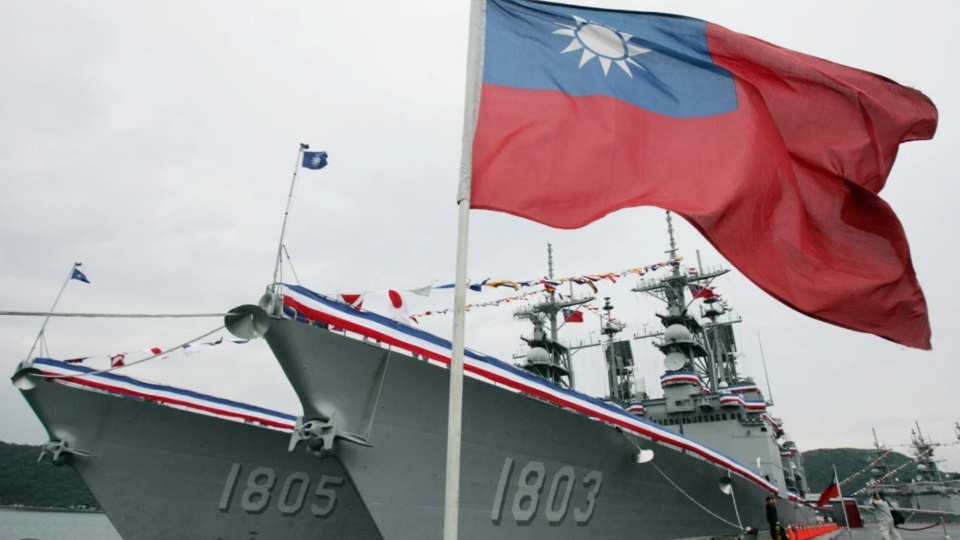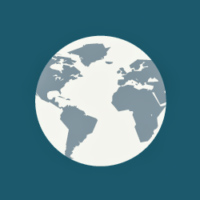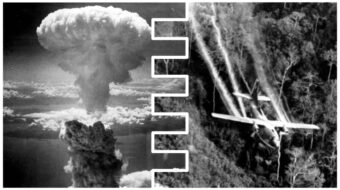
Imagine the following scenario: Donald Trump, the three-time indicted former president, wins the 2024 Republican nomination to regain his old job. As in 2020, however, he loses the election. But instead of fomenting an insurrection as he did on Jan. 6, 2021, he is able to convince several high-ranking military commanders that the results were a result of “voter fraud” and decides to leave the lower 48 states. With the support of a small group of armed forces personnel, overthrows the government of Alaska and declares that he is the legitimate President of the United States.
What would the U.S. government do?
The odds are pretty good that the legitimate president (Joe Biden, we assume) would order the military to use force to oust the phony Trump-led government. Why? Because Alaska is a state of the United States regardless of what Donald Trump might say. Would anyone fault such an act?
The point of this rather ludicrous idea (though nowadays you never know) is to show the situation between China and the island of Taiwan in a different light, one that diverges from what the media and Washington constantly throw at us.
Recently, the U.S. government announced a $345 million military aid package to Taiwan. The media splashed big headlines for a couple of days, then dropped the issue. That’s been business as usual for nearly 75 years when discussing Taiwan and China. What is not remembered is the history of postwar relations between China, Taiwan, Europe, Japan, and the United States.
Before discussing the current situation, however, some history from even further back is in order.
Human beings have been living on Taiwan for 30,000 years. For most of that time, the island was little known to the outside world. China and other East Asian countries had intermittent contact, but that all changed when the Portuguese arrived in 1544 and named it Formosa, which means “beautiful island.”
They were shortly supplanted by the Dutch East India Company, which set up several forts and developed a highly profitable trade in silk, sugar, porcelain, and rice, among many other commodities. By the 1640s, the island became involved in Chinese dynastic struggles. The Dutch were ousted, and by the end of the 17th century, parts of Taiwan came under Chinese control. After two centuries of conflict, the Chinese government made Taiwan into a province.
That lasted until 1895, when Japan conquered the island, with its control lasting until the end of World War II in 1945. Victory over Japanese imperialism on the mainland led to the resumption and culmination of the civil war that had been ongoing between the Communists and the Nationalists since 1927. On Oct. 1, 1949, the liberation forces established the People’s Republic of China.
The defeated Nationalists under Chiang Kai-shek fled to Taiwan and declared themselves still the government of the whole of China—the continuation of the old “Republic of China,” simply based temporarily in the province of Taiwan. The Nationalists, or KMT Party, never declared Taiwan to be an independent state. Though they disputed the Communists’ hold on power in China, the Nationalists did not seek to split Taiwan from the mainland.
Taiwan has therefore been a province of China from 1945 to the present, just as it was from 1885 to 1895 before Japanese imperial occupation.
For 30 years after the 1949 revolution in China, the United States recognized the “Republic of China” on Taiwan as the government of all of China. In the eyes of Washington, it was as if the People’s Republic did not exist.
That changed in 1972 when President Richard Nixon and his National Security Advisor Henry Kissinger visited China. After a week of intense discussions, the two sides agreed to work toward normalizing relations. At the end of their meetings, they issued a statement known as the “Shanghai Communique.” Among its important points was the understanding that:
“The United States acknowledges that all Chinese on either side of the Taiwan Strait maintain there is but one China and that Taiwan is a part of China. The United States government does not challenge that position. It reaffirms its interest in a peaceful settlement of the Taiwan question by the Chinese themselves.”
This agreement was reinforced in 1979 when the two countries established formal diplomatic relations. “The Government of the United States of America acknowledges the Chinese position that there is but one China and Taiwan is part of China,” it declared.
Even though the United States says it adheres to the one-China principle, Washington has been trying to play both sides of the street ever since establishing relations with Beijing. Shortly after President Jimmy Carter gave the speech announcing the breakthrough, and even though Washington said it was committed to settling the future of Taiwan peacefully, the United States began selling “defensive” weapons to Taiwan under the Taiwan Relations Act.
These “defensive” weapons expenditures in the 44 years since have amounted, by one estimate, to be around $90 billion dollars. At the same time, the U.S. Navy Seventh Fleet regularly conducts patrols around Taiwan with heavily armed warships. Add to these insults numerous other U.S. provocations, such as the visit of former Speaker of the House Nancy Pelosi to Taiwan in 2022 (a long tradition of U.S. Congressional leaders) and the recent meeting between Kevin McCarthy, the current House Speaker, with the political leader of Taiwan, Tsai Ing-wen, who was on a visit to the United States.
The Chinese position on Taiwan has not changed since the Shanghai Communique. A statement by China’s Foreign Ministry in 2022 sums it up: “There is but one China in the world, Taiwan is an inalienable part of China’s territory, and the Government of the People’s Republic of China is the sole legal government representing the whole of China.”
Much has been written about how relations between China and the United States are at their lowest point in decades, and speculations about that we are in “Cold War 2.0.” The relationship between the governments of the two largest economies in the world is understandably complex, but they do not have to include military brinksmanship.
The danger from a war between the two countries for any reason is beyond comprehension. Such a war could mean the end of human life on this planet. Mutual relations based on respect for each other, cooperation, and peace would be a great thing for every human being. This may sound idealistic, but the alternative is too hideous to contemplate.
It may be a long road to reach that goal, but we must take the first step: End U.S. arms sales to Taiwan and return to the principles set out between our two countries a half-century ago.
As with all op-eds published by People’s World, the opinions reflected in this article are those of the author.
We hope you appreciated this article. At People’s World, we believe news and information should be free and accessible to all, but we need your help. Our journalism is free of corporate influence and paywalls because we are totally reader-supported. Only you, our readers and supporters, make this possible. If you enjoy reading People’s World and the stories we bring you, please support our work by donating or becoming a monthly sustainer today. Thank you!










